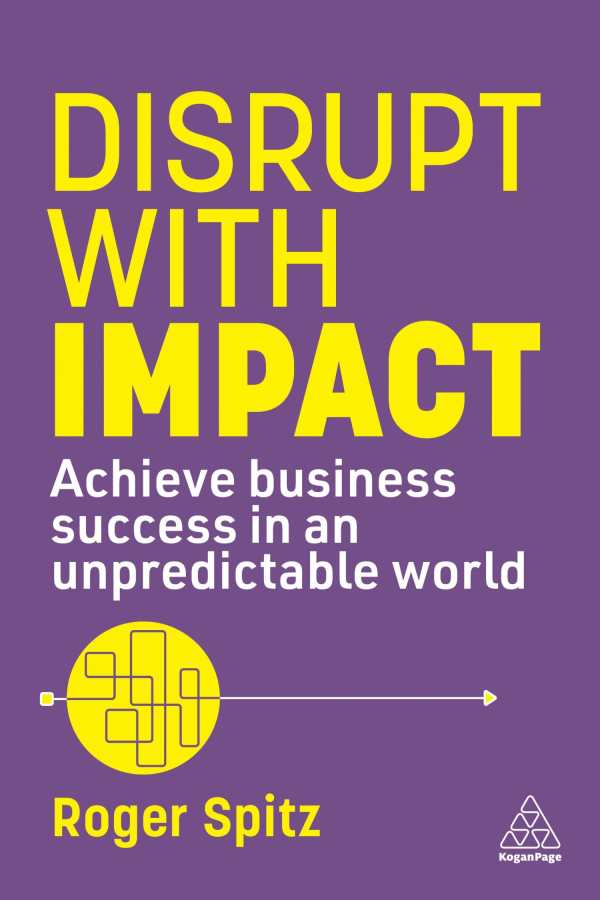Disrupt with Impact
Achieve Business Success in an Unpredictable World
- 2024 INDIES Winner
- Bronze, Business & Economics (Adult Nonfiction)
Touching on subjects ranging from AI to climate change, the leadership guide Disrupt with Impact models meeting contemporary challenges with aplomb and creativity.
Roger Spitz’s provocative business guide Disrupt with Impact emphasizes preparedness as it imagines the future “as a tool to inform today’s actions and short-term decisions.”
Asserting that disruptions are a constant, the book says that businesses can no longer assume a stable future. Still, it encourages regarding disruptions as not just challenges but sources of potential. With the right mindset and knowledge, it claims, businesses can still thrive in the ever-changing world.
The book first addresses the role of disruption before forwarding suggestions for embracing it and inventing “the future today.” Its advice alternative, UN-VICE, is presented as “a way to decipher changing circumstances imaginatively” and runs throughout the book, resulting in cohesion. Its examples and recommendations are practical and insightful, as when it uses Aristotle’s definition of first-principles thinking (“the first basis from which a thing is known”) to encourage leaders to “explore different ways of building” and to practice Socratic questioning in their problem-solving efforts, using an example from Space X as a model. Elsewhere, it addresses the Double Uncertainty Method, which was “formalized in the 1990s by foresight practitioners” to anticipate “both risks and opportunities” of their prospective choices. And it proposes that companies make room for a “chief existential officer,” rather than a chief risk officer, to anticipate “asymmetric outcomes that could jeopardize the future” as well as “outsized opportunities.” In addition, the book makes use of case studies, visual aids, appeals to Eastern wisdom, and innovative suggestions, approaching decision-making in an encouraging, holistic, and empowering manner.
The book’s breadth is ultimately detrimental, though. In jumping from concept to concept, it sometimes fails to connect the dots or leave enough room to digest its wealth of information. For example, a paragraph recounting a scene from Through the Looking-Glass is followed by a paragraph about science fiction becoming reality, which is followed by a paragraph on immersive virtual reality. The juxtaposition of such broad ideas results in buried takeaways, with points rushed through to make new points. Some abstract concepts, like the book’s discussion of “signals” on the horizon, are nontangible, and the book’s more theoretical segments are unmoored.
Still, there’s humanity and humor in the book’s approach, as when it jokes that “proposing yet another acronym is risky—I hope the acronym police will be merciful.” Clear language and precise analogies are used to illuminate key concepts as well. For example, the book uses the metaphors of black swans, which come out of nowhere, and gray rhinos, which are predictable, to address challenges like COVID-19: the pandemic may have seemed like a black swan, it says, but such an event was expected by experts and was instead a gray rhino.
A stimulating and future-focused leadership guide, Disrupt with Impact seeks to understand and leverage the world’s unpredictability.
Reviewed by
Hannah Pearson
Disclosure: This article is not an endorsement, but a review. The publisher of this book provided free copies of the book and paid a small fee to have their book reviewed by a professional reviewer. Foreword Reviews and Clarion Reviews make no guarantee that the publisher will receive a positive review. Foreword Magazine, Inc. is disclosing this in accordance with the Federal Trade Commission’s 16 CFR, Part 255.

